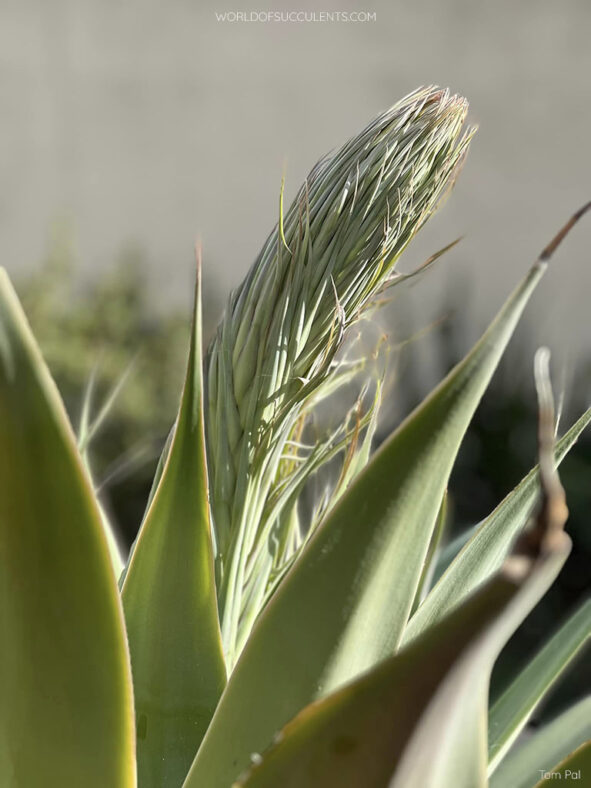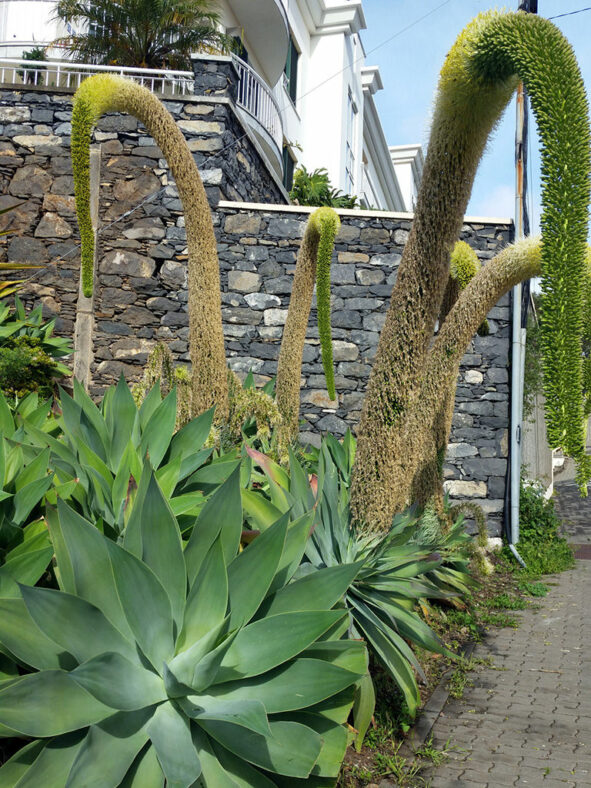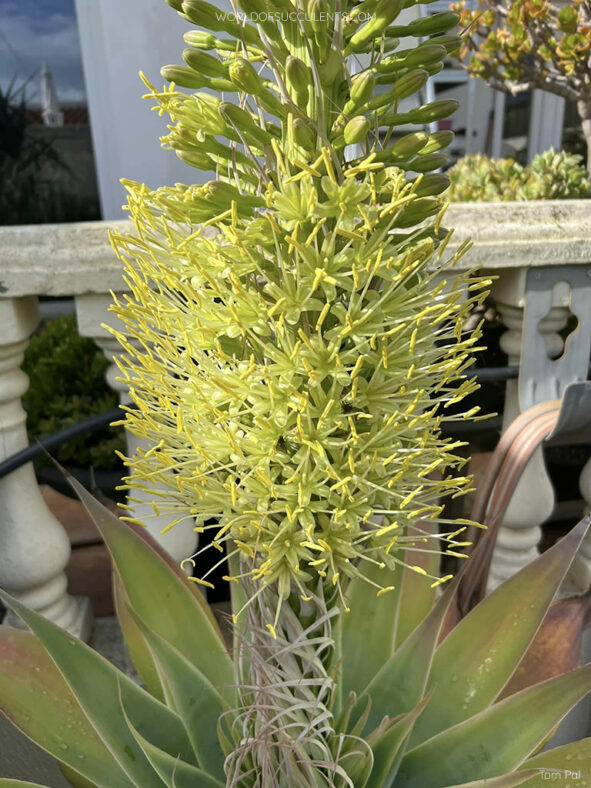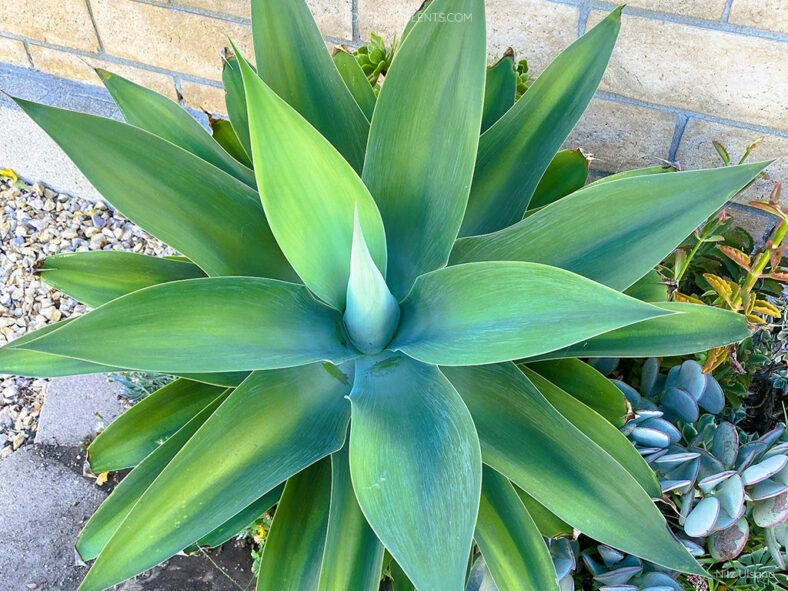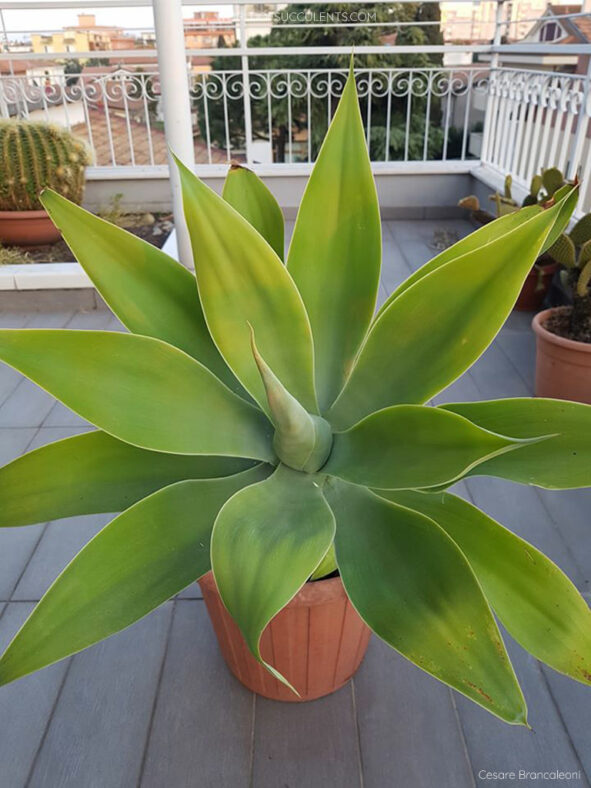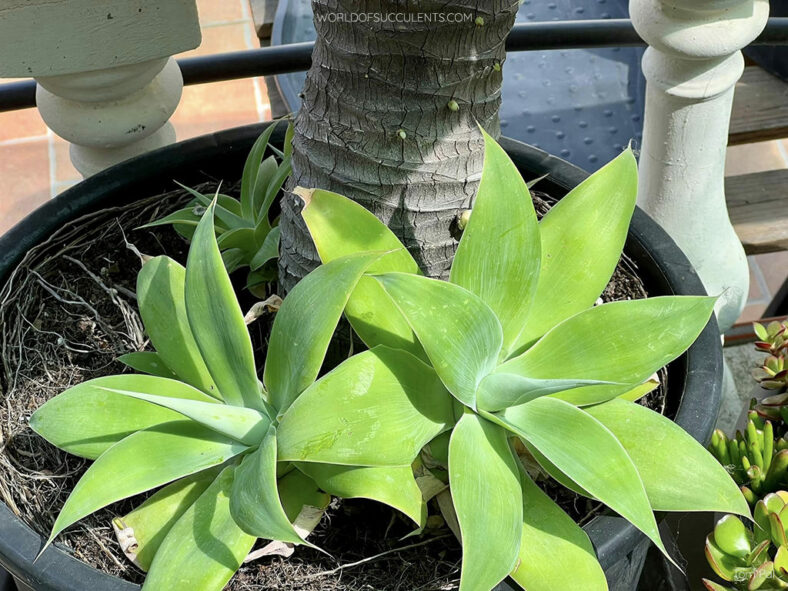Agave attenuata is a highly popular succulent that looks equally impressive in pots and gardens. Unlike most Agaves, it is harmless, making it a popular choice for those who want to avoid thorny plants. The original specimens were collected by Henri Guillaume Galeotti (1814-1858), a French-Belgian botanist, from an unspecified location in central Mexico and sent to Kew Gardens in 1834.
Scientific Name
Agave attenuata Salm-Dyck
Common Name(s)
Dragon Tree Agave, Elephant's Trunk, Fox Tail, Fox Tail Agave, Gooseneck Succulent, Lion's Tail, Soft-leaved Agave, Spineless Century Plant, Swan-neck Agave, Swan's Neck
Synonym(s)
Agave attenuata subsp. attenuata
Scientific Classification
Family: Asparagaceae
Subfamily: Agavoideae
Genus: Agave
Etymology
The specific epithet "attenuata" (pronounced at-ten-yoo-AY-tuh) means "thinned, reduced, attenuated; weakened, diminished" and refers to the gradual reduction of the leaves of this species as they taper to a slender point.
Origin
Agave attenuata is native to the plateau of central Mexico. It occurs in the states of Jalisco, Michoacán, and Mexico, where it grows in small colonies on rocky outcrops in pine forests at elevations ranging from 6,230 to 8,200 feet (1,900 to 2,500 m).
Description
Agave attenuata is a beautiful succulent that forms large rosettes of soft, flexible leaves with no teeth and terminal spines. The rosettes grow on top of a sturdy stem that can reach heights of up to (1.2 m). They can grow up to 5 feet (1.5 m) in diameter and form a cone in the center. The leaves vary in color, ranging from yellowish-green to blue-green or gray-green. They can measure up to 28 inches (70 cm) long and 6 inches (15 cm) wide and taper to a soft point that frays with age. As the plant matures, older leaves fall off, making the stems more visible.
The common name "Fox Tail Agave" refers to the impressive arching stalk of yellow flowers that emerge from the mature rosette in summer. The flower stalk can grow up to 10 feet (3 m) long and usually appears when the plant is about ten years old. After flowering, the rosette dies but produces bulbils on the inflorescence and offsets around the base, often forming a colony of rosettes.
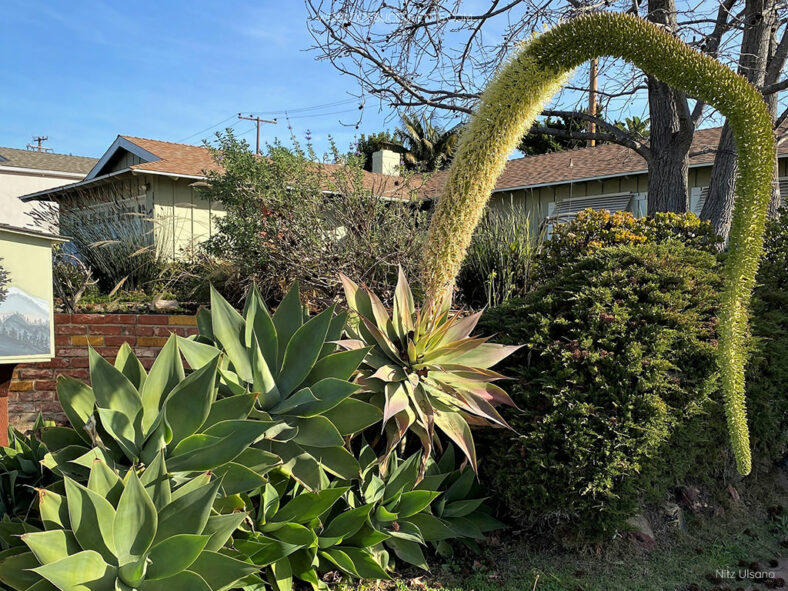
How to Grow and Care for Agave attenuata
Light: Agave attenuata grows well in full sun to partial shade. If you are keeping it indoors, place it near a sunny window. From spring to fall, it enjoys being outdoors.
Soil: This plant can tolerate most soil as long as it has good drainage. However, it thrives in soil that is sandy or rocky.
Temperature: During the growing season, Agave attenuata prefers warm and cooler temperatures while resting in winter. It grows best in USDA Plant Hardiness Zones 9b to 11b, with average minimum winter temperatures ranging from 25 to 50 °F (-3.9 to 10 °C).
Watering: To keep this plant healthy, water it thoroughly when the soil becomes dry from spring to fall. In winter, water it sparingly, about once a month. A plant in a container will require more frequent watering than a plant in the ground.
Fertilizing: In the spring, during the first two years, give the plant a small amount of fertilizer. Once Agave attenuata is established, it will take care of itself, and you no longer need to fertilize it.
Repotting: If you notice the plant is becoming pot-bound, repot it with fresh soil in a new pot slightly larger than the old one. After repotting, give the plant a week or so to readjust before you water it again.
Propagation: Since it can take years to produce seeds, this plant is usually propagated by offsets.
Learn more at How to Grow and Care for Agave.
Toxicity of Agave attenuata
Agave attenuata is non-toxic to humans, but the sap of the leaves and inflorescence may be mildly poisonous to children and pets.
Cultivars and Hybrids of Agave attenuata
Links
- Back to genus Agave
- Succupedia: Browse succulents by Scientific Name, Common Name, Genus, Family, USDA Hardiness Zone, Origin, or cacti by Genus
Photo Gallery
Click on a photo to see a larger version.
